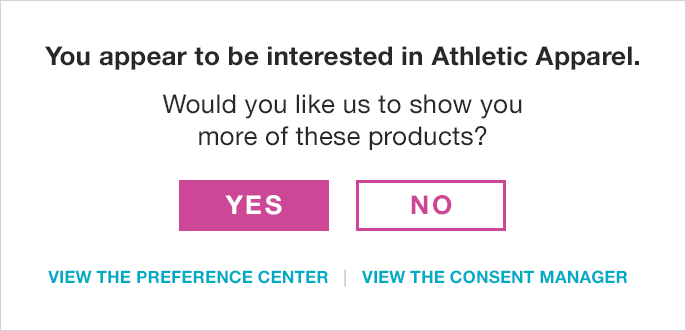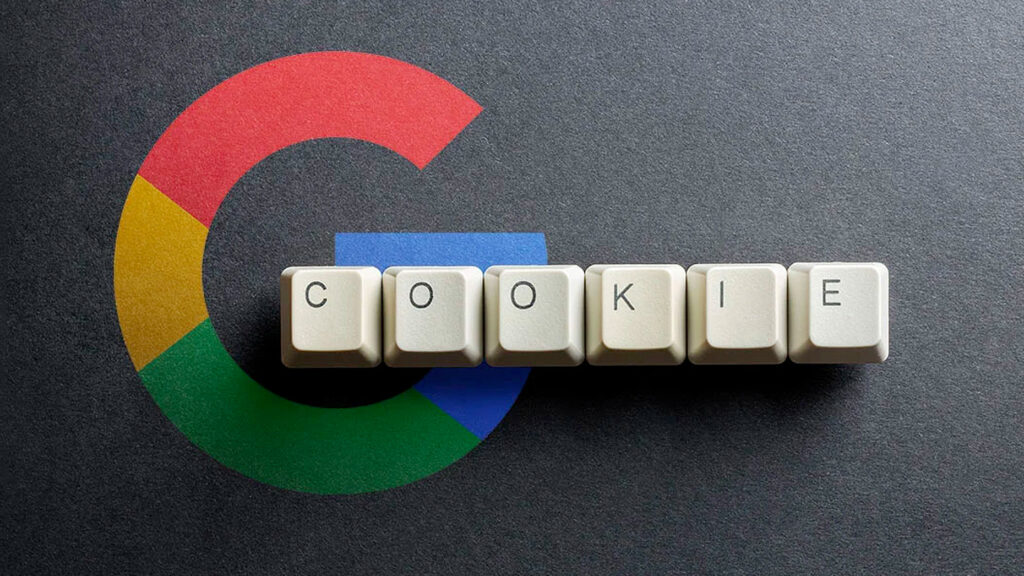There’s a puzzle I’ve been thinking about for quite a while – but before I explain, some background: the digital environment is changing, and consumers are seeking increasingly personalized experiences. As the desire for these experiences grows, consumers churn faster and faster when these expectations aren’t met; but digital users as a whole are becoming tangibly aware of the value of the data they’ve been giving to companies for decades. As a result of this awareness, much overdue legislation has been passed, making it significantly harder to collect personal data. That brings us to the puzzle: how do we provide more, while collecting less – and with greater visibility?
I previously shared some of my thoughts on zero-party data, which seemed to be a natural solution to this puzzle. While discussing zero-party data with one of our incredibly bright digital strategists Rebecca Derdoski, an idea began to take shape.
(Please note that, while I haven’t personally seen a company collect and utilize zero-party data in this manner, I can’t think of any reason why it couldn’t be implemented. It seems almost tailor-made for the current times.)
No Tracking? No Problem: Partnering With Customers for Personalized Experiences

Let’s start with a scenario. John goes to an online retailer. It could really be any type of retailer, but for the purposes of this examination let’s assume he’s looking for shoes. There are any number of retailers he could choose, but he finds himself on your storefront. Immediately he’s met with a consent banner. “Why are those everywhere these days?”, he thinks to himself before he clicks away. Suddenly we are flying blind – without measurement, instrumentation, or anything beyond our best approximation of what a generic customer would want.
He’s no longer John; he’s simply the lowest common denominator (LCD) we have yet to identify or build content to prepare for. We don’t know that he runs trails on the weekends, and plays pickup basketball games in the park every Thursday. We don’t know that he values utility and value over style, and every deviation from our generic LCD (lowest common denominator) visitor makes the case that we aren’t the storefront for him.
But what if we could respect John’s privacy, while still partnering with him on the journey? What if we could forgo the unwieldy preference center, which so few people choose to interact with, and build his preferences dynamically as he browses – all without tracking a single personal detail?
It’s possible. Let’s take a look at some methods.
Modern Problems, Modern Solutions: Collecting Zero-Party Data via Seamless Interactions

For the purposes of this thought experiment, let’s assume that there’s nothing we can do to make John trust us enough to consent to cookies. In most cases, that would be the end of it. However, there are many ways we can identify potential segments and preferences based on single page interactions.
We sell shoes, and a great variety of them to boot. The majority of our customers are lifestyle customers who value the name brand and closely follow us for our limited drops and cutting-edge designs. John’s needs are simpler than this. He’s shopping for two specific types of shoes: one for trail running, and one for pickup games in the park. But when he first lands on our homepage, he’s met with our offerings for Mr. or Ms. LCD, and nothing seems really applicable to his situation. He clicks through to the product wall and makes his way to athletic wear. This seems better, and he notices a small modal which reads:

This modal serves several purposes.
First, it allows a means of capturing zero-party data (data the customer self-reports about themselves), which is an incredibly potent and underutilized practice. Even better: It accomplishes this in the normal flow of the visit without tangibly disrupting the engagement. This preference could be stored for the session by default in the cache, but could be persisted if they self authenticate, providing yet another net benefit to us. Customers who authenticate even once have a significantly higher lifetime value, after all.
Additionally, it provides a means for the customer to visit the preference center and build out a comprehensive self-personalization that will help them find the appropriate products. Keep in mind that getting customers to engage with a preference center can be difficult, and forcing the customer to view it at any point can cause exits. Providing a means for the customer to discover it for themselves is the ideal solution.
Finally, it allows the customer to view and potentially re-evaluate whether they want to consent to tracking. It also shows customers that we use the data for personalization rather than any sneaky, nefarious purposes, and it could lead to an opt-in. Consent Rate Optimization is a vital priority for any company in the current ecosystem, and the best way to accomplish it is to lean into visibility and mutual value. This approach accomplishes both.
Getting to Know John: The Unique Power of Chat Bots to Inform Personalized Customer Experiences

Another option which, to my knowledge, doesn’t yet exist is similar to the modal, but more interactive.
Remember “Clippy”, the cartoon paper clip in Microsoft Office? Yeah, he could be a little overbearing sometimes … but his purpose was to help you find what you needed. We could employ a similar methodology here.
A chat bot system which allows the customer to dynamically search for products, content, or set preferences/consent can be a powerful tool. Based on the customer’s current page, the bot could serve the same purpose as the modal: a targeted interaction to help set the zero-party data. But it could go beyond that.
With chat bots, a massive amount of information can be gleaned from a single command supplied directly by the customer – information we can use to tailor our business precisely to their interests.
Let’s revisit the shopping scenario with our customer, John. John navigates to the home page and sees the chat bot in the bottom corner, asking if he has any questions or needs help finding anything. Simply by John inputting the command “I am looking to buy men’s trail running shoes on sale” we are able to operationalize multiple segments while performing a product search. From his response to the chat bot, we know that John is a man. We also know that he’s a runner; and more specifically, that he runs on trails. We’ve even identified that he shops sales, which suggests that he wouldn’t be looking for cutting edge products unless they were discounted.
This is a massive amount of information gleaned from a single command supplied directly by the customer, with the directed purpose of tailoring our business precisely to his interests.
Suddenly, John is no longer the LCD; he has his own unique properties with which we can engage.
Beyond the Lowest Common Denominator: How Zero-Party Data Empowers Customers and Shapes the Customer Experience

Zero-party data is becoming increasingly important as the age of privacy progresses, and legislation is just getting started. Even in cases where you’ve obtained consent to track, it can take a significant amount of time to gather the necessary data to correctly target customers – and you can always be wrong in your classifications. Building your experiences with zero-party data in mind can allow you to collect data on the fly, collaborating with your customers to enrich their experiences. John is much more than just a lowest common denominator, after all, and he deserves to be treated as such.
Interested in finding out more about how these techniques can help you? Reach out to us to find out how your organization can get the most out of zero-party data and build unique, tailored customer experiences that make a difference.

